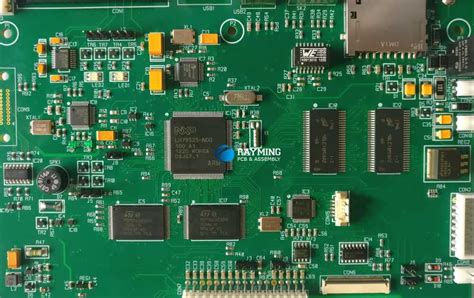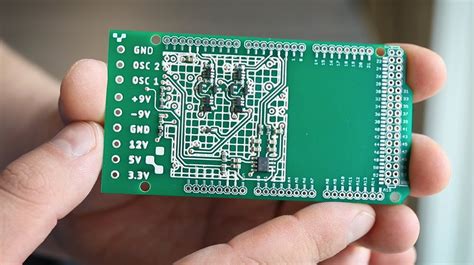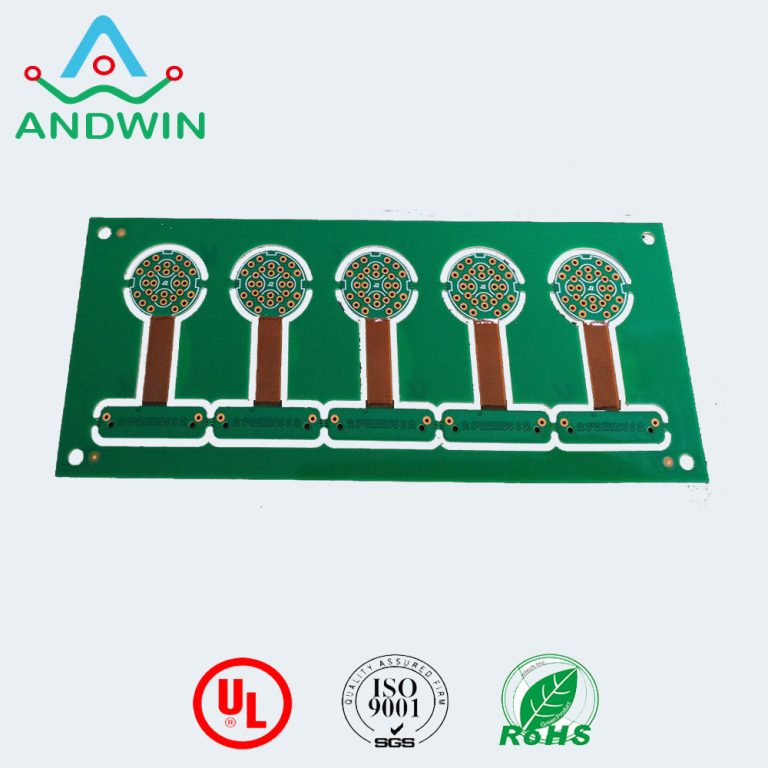Revolutionizing Technology: The Future of Board PCBA Design
Key Takeaways
The landscape of pcb assembly is evolving rapidly through innovative approaches to pcba design. Key advancements in this field encompass a variety of cutting-edge techniques that enhance both efficiency and functionality. For instance, the integration of high-density interconnect (HDI) technology allows for more complex circuit designs, which significantly optimize space on a circuit board. Furthermore, the adoption of advanced simulation software enables engineers to accurately predict performance outcomes before physical production begins, thus minimizing costly revisions. In addition to these techniques, the emergence of new materials, such as flexible substrates and eco-friendly laminates, is reshaping the manufacturing process and improving product sustainability. These materials not only contribute to higher reliability and performance but also address growing environmental concerns associated with electronics waste. Ultimately, understanding these key aspects will be essential for professionals within the industry as they navigate the future landscape of pcba technology and its implications for broader electronics manufacturing practices.
Introduction to Board PCBA: A Cornerstone of Modern Electronics
In today’s fast-paced technological landscape, board PCBA (printed circuit board assembly) stands out as a fundamental element in the development of modern electronics. The pcb assembly process involves the meticulous task of assembling electronic components onto a printed circuit board, forming the backbone of various devices, from smartphones to industrial machinery. As consumer demand for more efficient and compact devices increases, the evolution of pcba design is crucial.
The integration of innovative techniques has transformed conventional practices into state-of-the-art solutions that enhance both performance and reliability. For instance, advanced soldering processes and pick-and-place technologies improve precision and speed, reducing manufacturing time significantly.
Key Innovations in Board PCBA Design
| Innovation | Description | Impact |
|---|---|---|
| Surface Mount Technology (SMT) | Streamlines component assembly by placing components on the surface rather than through holes. | Increases density and performance in compact designs. |
| 3D Printing of Components | Enables rapid prototyping and customization of circuit elements. | Accelerates development cycles for new products. |
“Embracing new techniques in board PCBA not only optimizes manufacturing efficiency but also opens up opportunities for innovation that drives the entire electronics industry.”
The future of electronics is strongly tied to how well industry players leverage these advancements to improve pcb assembly practices. From reduced costs to improved environmental sustainability, the impact is profound and far-reaching, making board PCBA not just an operational necessity but a strategic advantage for companies aiming to stay competitive in an ever-evolving marketplace.
Innovative Techniques in Board PCBA Design
The landscape of board PCBA design is evolving rapidly, driven by the adoption of innovative techniques that enhance both functionality and manufacturability. One pivotal technique transforming the field is the use of surface mount technology (SMT), which allows for components to be mounted directly onto the surface of a printed circuit board, thereby optimizing space and improving performance. This approach not only speeds up the pcb assembly process but also supports finer pitch components, which are increasingly prevalent in modern electronics. Additionally, advancements in 3D printing are enabling designers to create complex geometries that were once deemed impractical. This technology facilitates rapid prototyping and allows for more intricate designs without significantly increasing costs.
Moreover, modular design techniques are becoming increasingly popular in pcba manufacturing. By creating interchangeable modules, engineers can simplify repairs and upgrades while reducing overall production time. This modularity aligns with the growing demand for sustainable practices, as it minimizes waste and encourages the reuse of components. Furthermore, integrating advanced simulation tools into the design process has allowed for real-time feedback on performance parameters, significantly reducing errors before physical prototypes are created.
The implementation of these innovative techniques not only streamlines production but also leads to higher quality products that can meet the diverse demands of contemporary electronics applications. Thus, as technology continues to progress, embracing these advancements is essential for manufacturers looking to maintain a competitive edge in the rapidly changing world of board PCBA design.
Emerging Materials Revolutionizing PCBA Manufacturing
The landscape of PCB assembly is transforming rapidly, driven by emerging materials that enhance the performance and reliability of PCBA processes. Notably, the incorporation of flexible substrates, such as polyimide and PET (polyethylene terephthalate), offers significant advantages in the production of circuit boards that require conformability and adaptability to diverse applications. These materials not only allow for thinner designs but also facilitate innovative multi-layer configurations that traditional rigid boards cannot achieve.
Another promising advancement lies in the advent of high-frequency laminates, which are critical for applications ranging from telecommunications to aerospace. These laminates provide superior dielectric properties, enabling PCBA to function efficiently at higher frequencies, which is essential for modern digital devices. Additionally, eco-friendly options like bio-based and recycled materials are beginning to gain traction in the industry, providing sustainable alternatives without compromising on electrical performance.
Furthermore, processes incorporating nanotechnology into PCB fabrication are opening new avenues for miniaturization while enhancing thermal management and electrical conductivity. This allows manufacturers to push the limits of what is possible in terms of component density and functionality on a single board. As these trends continue to evolve, it becomes increasingly clear that the choice of material is pivotal in shaping not just the operational capability but also the overall success of PCBA manufacturing innovations. The embrace of these emerging materials heralds a new era in which functionality meets sustainability, reflecting a broader commitment to technological advancement within the electronics industry.
The Role of Automation in Board PCBA Production
The incorporation of automation in board PCBA production is redefining the landscape of electronics manufacturing. Automation enhances precision and efficiency, which are critical in the pcb assembly process. By utilizing advanced robotics and sophisticated software, manufacturers can achieve higher throughput while minimizing the potential for human error. Additionally, automated systems facilitate real-time monitoring and quality control, ensuring that every aspect of the pcba meets stringent standards. Emerging technologies, such as artificial intelligence and machine learning, further augment these automation processes by enabling predictive maintenance and optimizing production schedules. Moreover, as production scales up, automation allows for greater consistency across large volumes of pcb assembly, ultimately leading to reduced costs and faster time-to-market for new electronic products. This transformative shift towards automation underscores a commitment to innovation in board PCBA design, paving the way for a more streamlined and effective manufacturing environment that meets the ever-increasing demands of modern technology.
Challenges and Solutions in Modern Board PCBA Design
The landscape of board PCBA design is fraught with challenges that necessitate innovative solutions to meet the demands of an evolving electronics market. One significant challenge is the increasing complexity of circuit designs. As devices become more integrated and feature-rich, manufacturers must adapt their pcb assembly processes to ensure precision and reliability. This demands advanced technologies such as automated assembly systems, which can streamline production while minimizing errors.
Additionally, the demand for smaller, lighter electronics is driving the need for emerging materials that can withstand newer requirements without compromising performance. Flexible circuits, for instance, present both an opportunity and a challenge; while they allow for greater design versatility, they also require specialized handling and assembly techniques to prevent damage during manufacturing.
Environmental considerations present yet another challenge in modern pcba design. The increasing focus on sustainability demands the incorporation of eco-friendly materials and processes, compelling manufacturers to rethink traditional production methods. Solutions such as the adoption of lead-free solder and recyclable substrates are becoming standard practices aimed at addressing these environmental concerns.
Moreover, supply chain disruptions have highlighted the need for resilient sourcing strategies in pcb assembly operations. Companies are now looking towards diversifying their supplier base to mitigate risks associated with material shortages or geopolitical tensions.
By addressing these challenges through innovation, collaboration, and strategic planning, the future of board PCBA design looks promising, paving the way for advancements that will continue to shape the electronics manufacturing landscape.
Case Studies: Successful Applications of Advanced Board PCBAs
The evolution of PCB assembly techniques has led to remarkable advancements in a variety of sectors, showcasing how PCBA innovations can enhance functionality and efficiency. One notable case study is the application of advanced board PCBAs in the medical device industry, where precision and reliability are paramount. These PCBA designs enable medical devices to achieve higher performance standards, incorporating miniaturized components that fit complex circuitry into smaller packages without compromising on quality. For instance, a leading manufacturer utilized state-of-the-art PCBA techniques to develop a compact telemetry device that monitors patient health metrics in real-time. This device not only improved patient care but also streamlined data reporting systems for healthcare professionals.
In the consumer electronics field, another success story comes from the rapid adoption of modular PCBA designs in smartphones. By integrating flexible circuits and novel materials, manufacturers have been able to reduce weight while enhancing durability, ultimately resulting in devices that are more user-friendly and robust. This approach has also significantly reduced production costs while maintaining high quality standards.
Moreover, the automotive industry is embracing advanced board PCBA applications as well, particularly in electric vehicles (EVs) where efficiency is critical. An automotive company successfully leveraged advanced PCB assembly methods to create a sophisticated vehicle control system that not only optimizes power distribution but also integrates seamlessly with various sensors and actuators. This integration results in enhanced performance and safety features for modern EVs.
These case studies exemplify how advanced board PCBAs are not merely theoretical advancements but practical solutions driving innovation across industries. Each example highlights the transformative potential of PCBA technologies as they continue to play a pivotal role in shaping the future of electronics manufacturing.
Future Trends in Board PCBA Technology
As the landscape of electronics continues to evolve, the future of board PCBA technology is poised for significant transformation. PCB assembly processes are becoming increasingly sophisticated, leading to improvements in efficiency and precision. One of the most notable trends is the integration of advanced manufacturing techniques, such as additive manufacturing and 3D printing, which allow for more intricate designs while reducing waste. Additionally, the introduction of smart materials enables faster prototyping and enhanced functionality in pcba applications. The trend towards miniaturization is also evident, with components becoming smaller yet more powerful, pushing designers to innovate continually in terms of layout and assembly techniques.
Furthermore, the growing emphasis on sustainability is driving manufacturers to explore eco-friendly materials and processes within pcb assembly. This includes the use of recyclable substrates and lead-free solders that minimize environmental impact without compromising performance standards. Automation plays a pivotal role as well; automated inspection systems are crucial in identifying defects early in production, ensuring high-quality output with less manual intervention. Collectively, these trends are not only shaping the future of board PCBA technology but are also redefining standards within the entire electronics industry as it moves towards a more interconnected and sustainable framework.
Conclusion: The Impact of Board PCBA on the Future of Electronics
The advancements in board PCBA technology have become a pivotal element shaping the future of the electronics industry. As manufacturers increasingly turn towards sophisticated pcb assembly methods, the emphasis on reliability, efficiency, and miniaturization has gained significant momentum. The integration of innovative techniques, such as automated assembly and more precise printing processes, ensures that the quality of pcba designs meets the rising demand for complex electronic devices. Furthermore, the adoption of emerging materials contributes not only to enhanced performance but also to sustainability within manufacturing processes. As we look forward, it is clear that continued investment in these areas will play a crucial role in determining how effectively electronics can evolve—supporting smarter devices and more interconnected systems. By understanding these developments and implementing forward-thinking strategies in pcb assembly, industries can harness the potential for improved product functionality and consumer satisfaction while addressing environmental challenges. The future is promising for board PCBA, heralding a new era of technological innovation that will inevitably transform our everyday interactions with technology.
Conclusion: The Impact of Board PCBA on the Future of Electronics
As we look forward to the evolving landscape of technology, the significance of board PCBA has never been more pronounced. The intricate process of pcb assembly not only underpins the current electronics manufacturing ecosystem but also sets the stage for innovative advancements that propel various industries forward. The integration of emerging materials and innovative techniques into board PCBA design is reshaping how we perceive electronic components, enhancing their performance and reliability while also optimizing manufacturing efficiency.
This evolution is particularly evident as automation plays a crucial role in refining production processes, enabling manufacturers to meet growing demands without compromising quality. Future trends suggest that as demand for more compact and efficient designs rises, the importance of high-quality pcba will become even more critical. Consequently, as new challenges emerge—such as maintaining compatibility with evolving technologies—the solutions found within the realm of board PCBA will define how effectively manufacturers can innovate.
In summary, the advancements in board PCBA technology will not merely influence electronics manufacturing but will also serve as a catalyst for the broader technological revolution, paving the way for smarter, faster, and more reliable electronic devices that are integral to our daily lives. The journey ahead holds great promise, driven by continuous improvement in pcb assembly techniques and materials that further enrich our technological tapestry.
FAQs
What is the difference between PCB and PCBA?
PCB stands for Printed Circuit Board, which is the base layer that provides the physical support for electronic components. PCBA, or Printed Circuit Board Assembly, refers to the PCB that has been populated with electronic components, making it operational.
What are some common challenges faced in board PCBA design?
Some challenges include managing thermal performance, ensuring electrical integrity, and addressing issues with component placement. As technology advances, adaptability to new materials and manufacturing techniques becomes crucial.
How can emerging materials impact PCBA production?
Emerging materials such as advanced substrates and lead-free solder can enhance performance, reduce environmental impact, and allow for more compact designs. Using innovative materials helps manufacturers stay competitive in a rapidly evolving market.
What role does automation play in board PCBA production?
Automation streamlines the pcb assembly process, reducing human error and increasing efficiency. It enables faster production cycles and consistent quality across larger volumes of products, which is essential for meeting market demands.
How do innovative techniques improve board PCBA design?
Innovative techniques like 3D modeling and simulation software enable designers to experiment with complex layouts before actual production. This results in optimized designs that enhance functionality while minimizing manufacturing costs.







